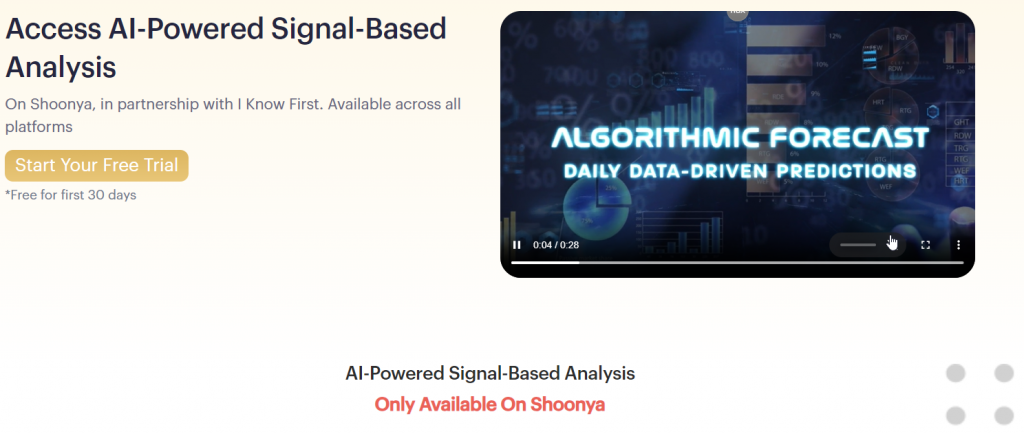Top 10 Tips When Evaluating Ai Trading Platforms Based On The User Interfaces They Provide And Experiences
The User Interfaces (UI) and the User Experiences (UX) of AI-based stock trading platforms are vital to their usability, efficiency as well as overall satisfaction and their overall performance. A poorly designed interface can hinder decision-making, even if the underlying AI models are robust. Here are 10 top tips to test the UX/UI on these platforms.
1. The ease of use and the user-friendlyness of the product is evaluated
Navigation The platform should be easy to use with clearly defined menus, buttons and workflows.
Learning curve: Evaluate the speed at which an unexperienced user is able to understand and utilize your platform without requiring extensive training.
Consistency: Look for similar designs (e.g., button designs and colors, etc.)) across the platforms.
2. Look for Customizability
Dashboard customization: Verify whether users are able to customize dashboards to display relevant data such as charts, metrics, and charts.
Layout Flexibility: The platform should let users move, rearrange or move widgets.
Themes and Preferences: Verify whether the platform supports dark and light modes, or any other visual preferences.
3. Visualize data using the Assess Tool
Quality of the chart: Make sure that the platform is high-quality and offers interactive charts (e.g. line charts, candlestick charts) with zoom and pan functionality.
Visual clarity: Ensure your data are clearly displayed by using labels, legends and tooltips.
Updates in real-time: Make sure that visualizations change in real time to reflect market trends.
4. Test for Speed and Reactivity
Speed of loading: Ensure that the platform loads quickly even when dealing with large datasets or complicated calculations.
Real-time performance: Determine whether the platform can manage real-time feeds of data without delay or lag.
Cross-device compatibility: Make sure that the platform is compatible with all devices, including desktop, mobile and tablet.
5. Examine Accessibility
Mobile app availability: Check whether the platform has a mobile app with all the features needed for trading on the go.
Keyboard shortcuts. Be sure the platform provides keyboard shortcuts for users who are skilled.
Accessibility features - Check that the platform is in compliance with accessibility standards.
6. Use the Examine Search and Filtering Function to examine your information.
Search performance: Make sure the platform allows users to quickly look up the indices, stocks or other assets.
Advanced filters - See whether users can apply filters, such as by sector, market cap or performance metrics to reduce the number of results.
Saved searches: Check whether the platform permits users to save frequently used searches or filters.
7. Be sure to check for alerts, notifications and other Information
Alarms that can be customized: Make sure users are able to set up alerts to be specific for certain conditions.
Notification Delivery: Check to see if notifications can be delivered in a variety of ways (e.g. via SMS, email or app notifications).
Make sure to check the alerts' time-to-date and accuracy.
8. Connect to other tools
Broker integration: Ensure the platform is integrated seamlessly with your broker account to assist in the execution of trades.
API access: Determine if the platform allows advanced users to develop customized tools and workflows.
Third-party integrations : Find out whether the platform is compatible with other software, like Excel Google Sheets or trading bots.
9. Assessment Help and Support Features
Take a look at the onboarding instructions.
Help center - Ensure that the platform includes a comprehensive support center or knowledge base.
Customer support: Verify whether the platform has prompt customer service (e.g. live chat, email, phone).
10. Test The Overall Satisfaction of Users
User feedback: Review and testimonials of research conducted to determine the general level of satisfaction with the UI/UX.
Trial period: Use the demo or trial version for free to test the platform for yourself and test its effectiveness.
Verify that the error handling is correct.
Bonus Tips
Aesthetics: While functionality is key aesthetics are important, a pleasing design can enhance the overall user experience.
Performance under stress - Test the platform's stability and responsiveness in markets with high volatility.
Forums and communities: Find out if the platform offers a community or forum for users to exchange feedback and tips.
Check these points to determine the user interface and UX of AI platform for analyzing and predicting stocks. This will ensure that they are user-friendly and efficient. Additionally, they should be able to meet the requirements of trading. A well-designed UI/UX will significantly improve your ability to make educated decisions and efficiently execute trades. Read the top stock analysis websites blog for blog recommendations including ai stock trading bot free, trading with ai, ai stock picks, stocks ai, copyright financial advisor, ai stocks, ai trading tools, canadian ai stocks, ai investment advisor, ai stock market and more.

Top 10 Tips For Assessing The Transparency Of Ai Stock Predicting/Analysing Trading Platforms
Transparency is a critical aspect when it comes to evaluating AI-driven stock prediction and trading platforms. Transparency is essential since it lets users be confident in the platform, comprehend the choices made, and check the accuracy. Here are the top 10 suggestions to evaluate the credibility of these platforms:
1. AI Models - A Simple explanation
TIP: Make sure the platform clearly explains the AI models and algorithms that are used to predict.
Why: By understanding the technology, users are able to assess its reliability and limits.
2. Disclosure of Data Sources
TIP: Ensure that the platform reveals the data sources that it draws from.
Why: Knowing the data sources ensures the platform is based on reliable and accurate data.
3. Backtesting and Performance Metrics Results
Tips: Look for transparency in the reporting of performance metrics (e.g. accuracy rates, ROI), and backtesting outcomes.
This is to allow users to evaluate past performance against the latest platform.
4. Real-time notifications, updates, and updates
Tips: Make sure you can get real-time notifications and updates on the system's trades, predictions or any modifications to the system.
What is the reason? Real-time visibility assures that users are always conscious of crucial actions.
5. Open Communication about Limitations
Tips: Make sure that the platform discusses openly the limitations and risks of its forecasts and trading strategies.
The reason: Recognizing limits increases confidence and allows you to make better decisions.
6. Raw Data Access for Users
Tip: Ensure that the users are able to access the raw data that is used in AI models, or the intermediate results.
Why: Access to raw data allows users to perform their own analysis and verify the results of their own predictions.
7. Transparency on the charges and fees
Tip: Make sure that the fees, subscription charges, and other hidden costs are clearly disclosed on the platform.
Reason: Transparent pricing helps avoid unexpected costs and builds confidence.
8. Regular Reporting and Audits
Tip: Check if the platform is regularly updated with reports or undergoes third-party audits to verify its operations and performance.
Independent verification is crucial because it adds credibility to the process and assures accountability.
9. Explainability and Predictions
Tips: Make sure the platform has information on how recommendations or predictions (e.g. the importance of features and decision tree) are generated.
The reason: Explainability helps users to comprehend AI decisions.
10. User Feedback Channels and Support
Tip - Check if the platform provides open ways to receive feedback and assistance from users and respond transparently to their concerns.
What is the reason: Effective communications show a commitment towards the transparency of communications and satisfaction of users.
Bonus Tip – Regulatory Compliance
Verify that the platform adheres to financial regulations that are relevant, and make sure it publicly discloses the compliance status. This is another level of transparency and trustworthiness.
By thoroughly assessing these aspects it is possible to determine if an AI stock prediction and trading platform operates transparently, enabling you to make informed choices and gain confidence in the capabilities of AI. Have a look at the best read this for incite for blog examples including ai trading software, trade ai, incite ai, incite ai, incite ai, investment ai, ai chart analysis, ai investment platform, chart ai trading, ai for stock trading and more.

Comments on “20 Handy Facts For Deciding On Chart Ai Trading Sites”